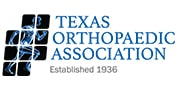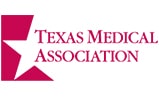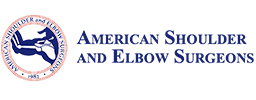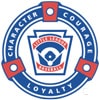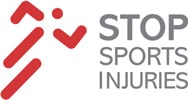My office assistant will call you in a few days following your surgery. She will schedule your first post-operative visit and physical therapy. Your first post-operative visit will be with my nurse or my PA. If you have any problems, please contact the office at (713) 486-3150
Explanation
Elbow surgery is now commonly done in an ‘out patient’ setting allowing you to have surgery and return home both safely and comfortably the same day. Rarely, a patient will have nausea or pain, which is severe enough to require overnight hospitalization.
Medications
If you need a refill on your medication, please call my office by early Friday morning to ensure that you will have your medications over the weekend. If you think you might have an ALLERGY to any provided medication, Do Not Take the Medication and call us for an alternate medication.
- Narcotic Medication (Hydrocodone, Oxycodone): Only take the narcotic medication if you have pain that warrants the narcotic medication. And when you no longer need the narcotic medication, return what remains to the pharmacy where the medication will be destroyed for you. It is not wise to keep narcotic medications in your home. However, you should not wait until your pain is severe before you take the narcotic medication, because you will be very uncomfortable and may find it difficult to catch up. Stay ahead of your pain. Always take the narcotic medication with food. At night, it is common to think your pain is more severe, but typically, there is less to distract you from your pain and it just seems more severe. Narcotics may have a paradoxical effect on your sleep and more narcotic may make that worse. Using less narcotic with something that helps you sleep may be more effective for both pain control and sleep – but be cautious not to suppress your drive to breathe and if you have sleep apnea, use your sleep apnea aids.
- Muscle Relaxer (Robaxin): Sometimes your surgical procedure will warrant use of a muscle relaxer. Be cautious and aware that muscle relaxers may affect your drive to breathe, your level of alertness and your mental state.
- Non-Steroidal Anti-inflammatory Drug - NSAID (Advil, Motrin, Nuprin): During the first two days, you may occasionally take a NSAID tablet in between doses of the narcotic medication if your pain is not controlled with the narcotic medication alone. Always take the NSAID with food. Do NOT routinely take the NSAID if you had ligament repair or tendon repair (for 6 weeks after surgery), if you have an ulcer, if you have a history of problems taking a NSAID, or if you have any stomach irritation from taking a NSAID.
- Acetaminophen (Tylenol): The provided narcotic medication will contain Acetaminophen so do not take additional Acetaminophen with the narcotic medication to control your pain. You may take Acetaminophen when off narcotics.
- Anti-nausea Medication (Zofran, Phenergan): Zofran tablets dissolve in your mouth. The medication works better to prevent vomiting than it does to stop vomiting so, stay ahead of your nausea and take medication as soon as you begin to feel nauseated. Phenergan suppositories will work better to stop vomiting and can be called into your pharmacy if needed.
- Antibiotic (Keflex, Clindamycin, etc.): Depending on the procedure, you may have been sent home with a two-day course of an antibiotic medication. Take as directed.
- Antithrombotic (Lovenox): Sometimes your history or medical condition will call for use of a medication to decrease your risk for blood clots. If so, you will be provided a prescription for, and instructed in the use of an injectable medication. Use as directed
Pain Management
A cold therapy cuff, pain medications, local injections and in some cases, regional anesthesia injections are used to manage your post-operative pain. The decision to use each option is based on their risks and benefits.
- Pain Medications: During the first night after surgery, you may set an alarm and take the narcotic medication every 4 hours – thereafter, only take as needed. Do not leave the medication bottle at your bedside.
- Regional Anesthesia Injections: Rarely, you may have been given a regional nerve block after surgery. This may make your entire arm numb for 12 – 72 hours. Please call if you have concerns.
Activity
After you arrive at home, take it easy and limit your activity – but it is OK to be up to stretch your legs frequently. After the first twenty-four hours, increase your activity level based on your symptoms, but remember that the longer you stay in bed, the longer it will take for you to feel better and get your strength back. Sleeping after elbow surgery during the first several weeks is sometimes best when propped up or in a reclining chair.
Diet
During the first 2-4 hours after surgery, you may eat small amounts of food every 20-30 minutes but don't eat a large meal until your stomach is emptying well. Drink plenty of fluids.
Dressing Change
You may have been sent home in a splint. Keep the splint clean and dry.
You will be advised when you may remove the dressing(s) / splint (sometimes they will be removed in the office on your follow up visit). If you had an open operation there may be a plastic covering and / or steri-strips across your incision. Do not remove the plastic covering or steri-strips. It is normal for blood to be on the dressings. It is also normal to see bruising around your elbow. If your hand is swelling, elevate your arm. If this does not help, then you may loosen the dressing and splint to decrease compression. If you are concerned by swelling, drainage or the appearance of your elbow, please call my office.
Showering
You will be advised when you may shower but typically you may shower after three days (if the wound is dry and clean), or after the splint is removed but do not let the wound soak in water until the sutures are removed. If you do not have a shower, keep the wound dry when you bathe. If you shower before your remove the splint, be sure that the plastic bag worn over the splint does not leak (Your pharmacy will typically sell a plastic “cast sleeve” or “shower sleeve” that will help keep the splint dry).
Elbow Sling, Immobilizer
Based on the procedure, you have been sent home either with a simple sling, or a padded arm immobilizer. This device will help immobilize and protect your elbow after surgery. You will be advised regarding how long you will need to wear the sling.
Elbow Exercises
You will be advised what exercises you may do. These exercises will also help control swelling and prevent stiffness.
- Hand grip exercises - Open and close your hand throughout the day beginning the first day after surgery. Squeeze a soft ball, cloth or sponge.
- Elbow Motion exercises - After the splint is removed, straighten and bend your elbow throughout the day.
- CPM Elbow - In some cases a motion machine will be provided to recover elbow motion or facilitate cartilage healing. Use as directed.
Range of Motion ______ to ______ degrees. Duration ______ hours per day. - CPM Knee – In some cases a graft will be harvested from the knee and a motion machine will be provided to recover motion or facilitate cartilage healing. Use as directed.
Range of Motion ______ to ______ degrees. Duration ______ hours per day
Therapy
You will be advised regarding when your physical therapy will begin and my nurse will call to help you set up your first visit.
Driving
You should not drive while you are on narcotic medications or muscle relaxers, your arm is immobilized in a cast, splint, immobilizer or sling, you are having pain or weakness that limits your ability to drive safely and react quickly, and / or you are uncertain of your ability to drive safely and respond fully in an emergency situation.

